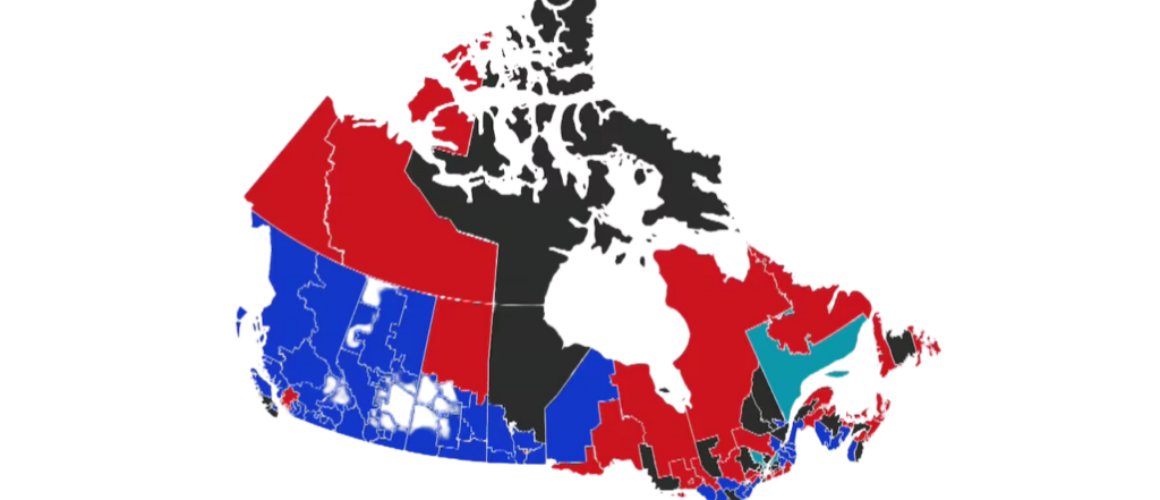The Untold Influence of Rural Canadians: How Small-Town Voters Changed the 2025 Election

In the 2025 Canadian federal election, much of the media attention was focused on major urban centers like Toronto, Montreal, and Vancouver. However, it was the quieter voices from rural Canada that played a pivotal role in shaping the outcome. While large cities have always been seen as the heart of Canadian political power, this election revealed a shift in the political landscape—one where small-town voters emerged as a key force that could no longer be ignored.
A Shift in Priorities
The rural vote has historically been seen as conservative, with a focus on issues like resource extraction, agriculture, and trade policies. But the 2025 election saw a distinct shift in the concerns of voters in these areas. Instead of just focusing on traditional topics, voters in small towns increasingly prioritized issues such as healthcare access, infrastructure development, and job creation.
In regions like Northern Ontario, Saskatchewan, and parts of the Maritimes, where the rural economy has struggled due to changes in global trade and environmental policies, voters sought candidates who promised to address their local needs in more specific, tailored ways. Healthcare was a top concern. With rural healthcare services increasingly under strain, access to healthcare professionals, mental health resources, and emergency medical services was a crucial issue for many Canadians in these regions.
Moreover, as global warming and climate change increasingly impact farming communities, agricultural policies that focused on sustainability and diversification became more appealing. While many of these voters have traditionally sided with the Conservative Party, 2025 saw an increased willingness among rural Canadians to consider other parties offering robust climate change adaptation plans.
The Rural-Urban Divide: More Than Just Geography
The divide between urban and rural voters is not a new phenomenon, but in 2025, it took on a new level of significance. Traditionally, rural voters have aligned with the Conservative Party, seeing them as the protector of resource industries and fiscal conservatism. However, as the election results rolled in, it became evident that the rural vote in 2025 was more nuanced.
Candidates from across the political spectrum were forced to pivot their platforms in response to rural voters’ concerns. In fact, rural Canada became the battleground where elections were won and lost. In Saskatchewan and parts of Alberta, the Liberals managed to secure several ridings by offering ambitious plans for renewable energy investment, technology infrastructure, and rural healthcare reform.
The shift was most noticeable among younger rural voters. Many of them are looking for a future that does not rely solely on traditional industries like mining and oil, but also on technology, clean energy, and other forms of economic diversification. These young Canadians are tired of seeing their communities struggle with unemployment and the declining viability of resource-dependent economies.
As a result, these young voters turned to candidates who acknowledged these changes. The Liberal Party’s promise of clean energy job creation, and even the New Democratic Party’s focus on social justice and rural healthcare reform, resonated with a new generation of rural voters looking for something beyond the status quo.
The Influence of Local Candidates and Issues
While national platforms and party leaders receive most of the attention, local candidates and issues also played a decisive role in this election. In several small-town ridings, local candidates with strong ties to their communities proved instrumental in swaying the vote. These candidates often had deep knowledge of local needs and were more connected to their constituents than national party leaders could ever be.
In fact, many rural voters were drawn to candidates who were local leaders, business owners, or community activists with a vested interest in the region’s future. Their platforms were less about ideological purity and more about addressing the unique challenges faced by their communities. The result was that voters often felt they were making a decision not just about national policy but about the future of their local way of life.
Some of the most contentious debates in rural ridings centered on infrastructure projects, such as broadband internet access. While urban areas have long been connected to the digital economy, many rural communities still struggle with limited access to high-speed internet. This has made it difficult for rural businesses to compete in an increasingly digital world and for students to access online education.
Candidates who proposed targeted plans to address these infrastructure gaps found strong support among rural voters. The election results indicated that rural Canadians are no longer willing to be sidelined in favor of larger cities—they are demanding equal access to the tools that will help them thrive in a modern economy.
Looking Ahead: The Future of Rural Political Influence
The 2025 election marked a turning point for rural Canada. While the media often focuses on the big city battlegrounds, it’s clear that rural voters are no longer content to let urban centers dictate the country’s future. As rural populations continue to grow and evolve, the political parties that ignore these concerns do so at their peril.
The results also suggest that the political narrative in Canada is slowly changing. The traditional “rural-urban divide” is becoming more of a “regional divide,” with rural and small-town voters looking for policies that reflect their specific challenges and opportunities. As climate change accelerates, the need for new economic models in rural areas will only intensify, making this an area that all political parties will need to address more comprehensively in future elections.
While the 2025 election may have been seen as a contest between major urban centers, the real story lies in the small towns and rural communities that proved to be the silent power brokers of the race. This shift represents a significant change in how Canadian political parties must think about their approach to governing—not just in the cities, but in the heart of rural Canada.